I’m always on pretty thin ice with this show, simply because it has relatively little overlap with my spheres of interest. The practical impact of that is there’s not much margin for error – if something doesn’t click, it loses me pretty quickly. I can appreciate on an abstract level that it’s really well done. But that’s not the same as genuinely enjoying it, which has been more intermittent. And this episode was pretty much that in microcosm.
It was a tale of two halves, more or less. I found the first section to be pretty boring honestly, and the Inui siblings don’t really work for me. They’re both pretty tropey, and Yomiya Hina as Shinjuu is doing that breathy, cutesy voice that grates on me like fingernails on a blackboard. Cameras are something I have only a mild interest in, and cosplay not at all. I have major respect for cosplayers – their dedication, their work ethic, their skill. But the hobby itself does nothing for me whatsoever. Even as an anime fan I can’t grasp why people would be so dedicated, hard-working, and skilled about this particular hobby. Their reasons are totally valid, I’m certain – they just don’t make sense to me.
The bit with Sajuna and Wakana on the stairwell was really the only part of the chapter that sparked my interest. And not so much for Sajuna and her vamping, but because it was a rare moment where Goujou’s passion was put on equal footing with the girls’. In fact I expected him to express some guilt over spending all his time facilitating Sajuna and Marin’s passion while ignoring his own chosen vocation. Because let’s be honest, he is. It’s undoubtedly healthy for him to have a social life and not be staring at bisque dolls all day and night – my issue is that he’s basically an appendage to someone else’s interests at the expense of his own.
This is the deal with the Devil Sono Bisque Doll is always flirting with. Marin is at risk of existing mainly to fulfill the MC’s (and viewer/reader’s) fantasies, the proverbial MPDG. And Goujou is always at risk of being the generic MC whose individuality is irrelevant, and whose existence mainly serves to give the pixie someone to influence. Yet the B-part shows that this doesn’t have to be the case – there’s serious potential in both these characters, should the series choose to embrace it. The beach trip was quite a winning sequence, even if the pandering element was a little over the top at times.
The most interesting dynamic in Sono Bisque Doll wa Koi wo Suru for me continues to be the introvert-extrovert angle. Tossing everything else aside, that’s the story that resonates with me. Marin and Wakana are so totally opposite in personality that they’re interesting as a pairing. She’s a complete loose cannon, (almost) always saying what she thinks, diving into every situation with ridiculous enthusiasm. He holds back, worries about every possible consequence, unconsciously tries to disappear into the background even as she’s unconsciously trying to make sure every pair of eyes is on her.
The metaphor on the beach at Enoshima wasn’t subtle, but the point was made. Extroverts dive in and damn the consequences, introverts hover on the sand and watch plaintively. Where this gets interesting (and where such relationships can overcome the odds and succeed in real life) is that they’re slowly changing each other. Marin is forcing Wakana to dip his toes into the water literally and figuratively, to venture into the larger world. And her love for him is forcing her to do something she seemingly never does – hold back what she really thinks, and worry about whether he feels the same way. Not only is that interesting storytelling, but it’s the key to escaping the MPDG trap – when the MC starts to impact the pixie and that becomes part of the story, she’s no longer bound by the limitations of that trope.


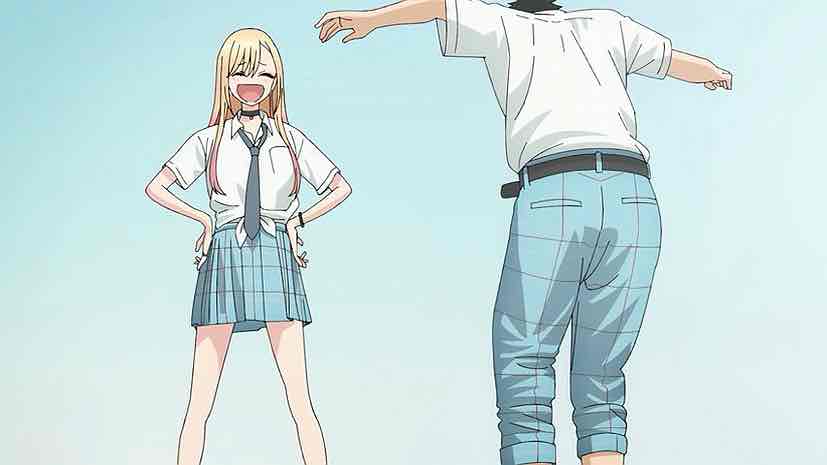

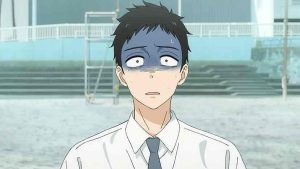
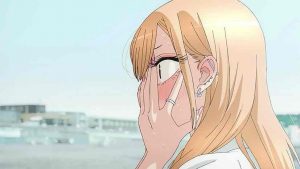

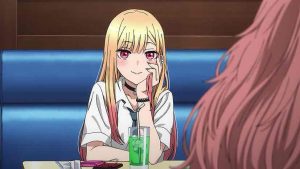
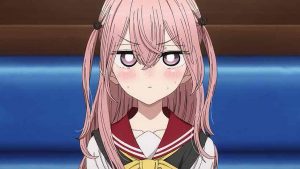

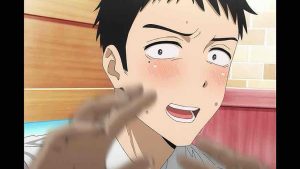


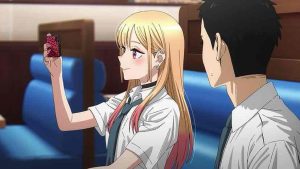
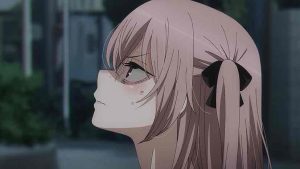
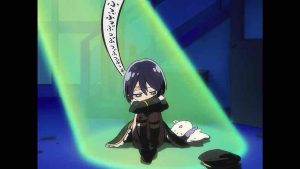
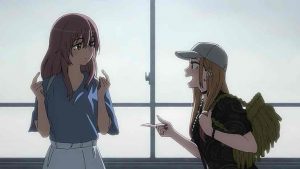
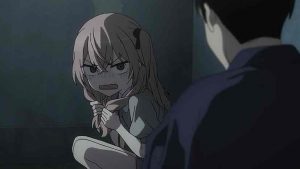
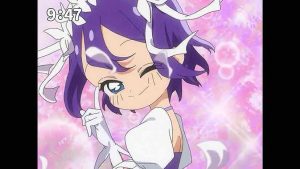
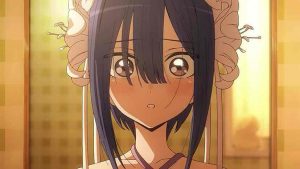


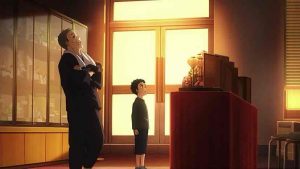
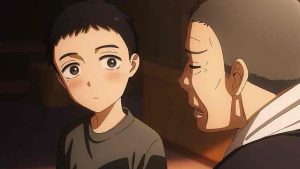
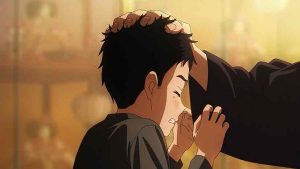
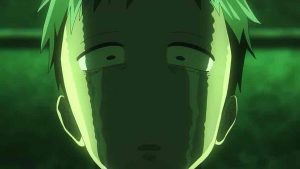

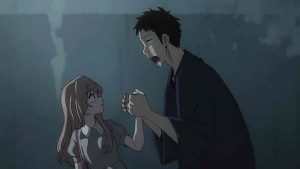
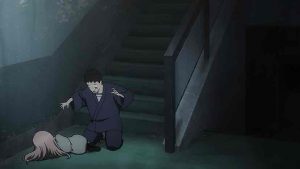

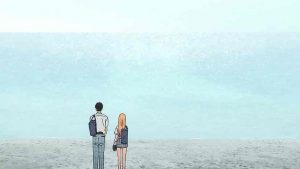


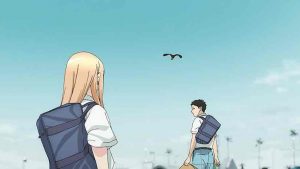
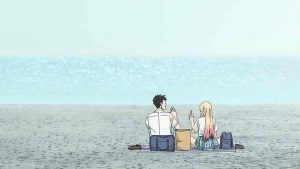

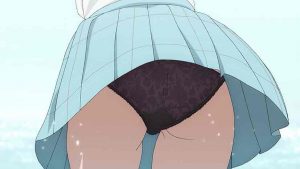
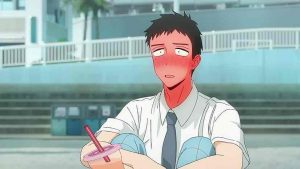
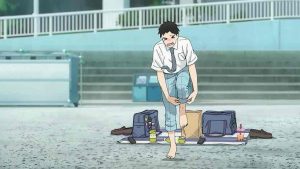


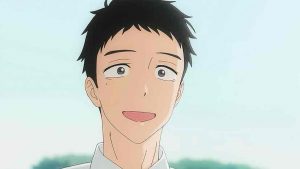
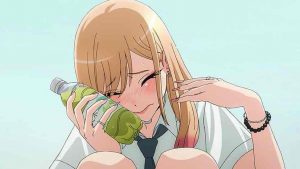

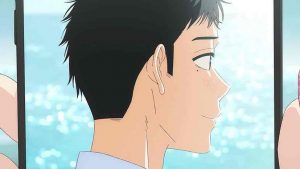
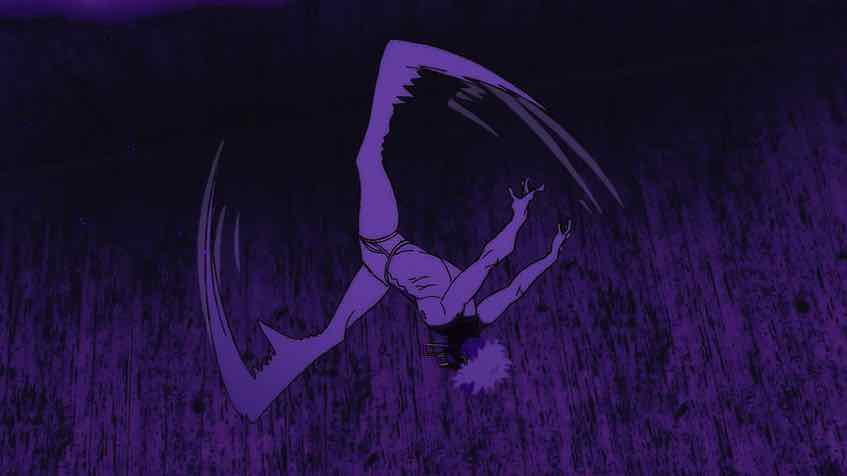
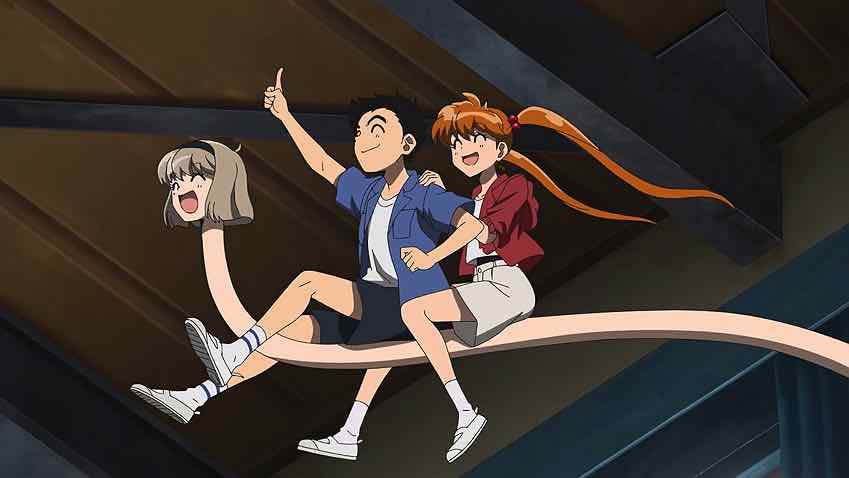
Polly
February 27, 2022 at 6:29 pmObservation: the series focuses less on Wakana’s Hina doll passion than Marin’s cosplay obsession, but when it DOES get focus, it’s treated with the same level of respect.
Guardian Enzo
February 27, 2022 at 9:18 pmKind of a left-handed compliment…
Polly
February 27, 2022 at 10:57 pmReally? I had no intention of insinuating anything negative about the show or about your views.
I think it’d be obvious by now that I’m kinda charmed by the show at this juncture.
Guardian Enzo
February 27, 2022 at 11:22 pmNot insinuating that you’re insinuating! It’s just that there’s an implicit criticism intertwined with that compliment.
LiA Lurker
February 28, 2022 at 12:05 amI’m not a cosplayer either but the first half of the episode still clicked with me, mainly because of that moment where Juju sees the costume in the window and realizes that this will be her way of bringing her hobby into adulthood instead of leaving it behind in childhood. And I think all people who remain hardcore anime fans into adulthood do it because they have something like that: for you it’s blogging about anime, for others it’s translating, animating, writing fanfiction or cosplaying.
sonicsenryaku
February 28, 2022 at 2:10 amI don’t think the beach metaphor is as on-the-nose as you’re implying, especially since most of the dialogue during that scene doesn’t even point to that being the intent (even though it very well supports the subtext of the show); heck, most of the discourse on this episode didn’t even seem to pick up on it. Anyway, something you said last week about this show reminding you of a light novel as opposed to a manga got me thinking about the way our anime community use the source material of LN and manga to describe the inherent quality of a series. Looking at Sono Bisque, there’s nothing about it that would inherently strike a cord as having characteristics of storytelling found particularly in light novels. Most of the tropes here can be found in other manga of this genre and are typically utilized to the same effect. Not to mention that the show’s storytelling, pacing, and dialogue is styled like what you’d find in a manga. I guess what I’m saying is, whether or not the LN comparison is meant to be a dig at the show, I would never watch something like this and think to myself: “hmmm, this feels like it was adapted from a light novel or that it reminds me of a light novel,” as I don’t see most of the new-age light novel trappings that typically define and characterize the media and I don’t feel the affect of LN prose the way I typically would with something that had the quality of a LN. So I guess my next question is: does Sono Bisque remind you of a LN because you’re turned off by parts of the show and it puts you in the mindset of Oreimo, hence you associating the quality to something less appealing; or are there actual LN trappings in Sono Bisque that can be identified as inherent to LN’s, resulting in your enjoyment of show being affected?
Guardian Enzo
February 28, 2022 at 7:42 amI don’t think there’s anything in the way SBD reminds me of a LN that directly limits my enjoyment of it. As I said there’s a specific LN it reminds me of, Oreimo – which, for all its grievous faults, is somewhat atypical for LNs story-wise. What, specifically, reminds me? If I had say I guess the rhythm and meter of the dialogue, and the way the characters interact with each other. It just puts me in mind of that style (and bear in mind, I quite liked the first season of Oreimo).
sonicsenryaku
February 28, 2022 at 3:29 pmHmmmm, seems sensible enough. I guess the reason why I can’t see it is exactly because of the very things you mention like the rhythm, meter of dialogue, and character interactions. I would never compare the way the characters of oreimo interacted, even in season 1, to that of the cast of Sono bisque. There’s something about Oreimo’s script that retains more of that “new-age LN dialogue” and pace that Sono bisque kind of avoids; for me, it’s the rhythm and pace of dialogue between Marin and Wakana specifically that gives the series its charm.